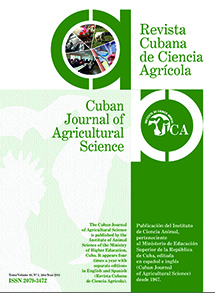Socio-environmental risks of five rural communities in Napo province from the Ecuadorian Amazon
Contenido principal del artículo
Resumen
The objective of this study was to identify the main socioenvironmental risks to which rural communities are exposed: Chontapunta, Ahuano, Ila, Chucapi and El Capricho, from Napo province, in Ecuador. A random survey was applied, as an information collection instrument, to determine the socioeconomic, houses, disaster memory and emergency preparedness characteristics. The results show that there are different ethnic groups, with a diverse level of education. The risks of pests in crops and human epidemics were detected, exceeding 40 % of those surveyed in the Ahuano, Chonta Punta and El Capricho communities. As for the communities, 25 % reported risks of natural origin, such as floods and earthquakes. The communities have piped water and the waste water is not treated. They have daily and weekly waste collection services, most of them have an educational center and, to a lesser extent, health centers and public spaces. In the risks close to the houses, there are more reports about the presence of nearby trees and rivers. The analysis of variance showed ethnic self-identification and time of residence as the factors that reported the highest number of variables with differences for P ≤ 0.05. It is concluded that the areas are exposed, mainly, to physical and biological risks. The emergency response capacity is not developed, in terms of infrastructure, preparation and equipment.
Key words: anthropic, community, natural, preparation, risk.
Detalles del artículo
Aquellos autores/as que tengan publicaciones con esta revista, aceptan los términos siguientes:
- Los autores/as conservarán sus derechos de autor y garantizarán a la revista el derecho de primera publicación de su obra, el cuál estará simultáneamente sujeto a la Licencia Creative Commons Attribution-NonCommercial 4.0 International (CC BY-NC 4.0) que permite a terceros compartir la obra siempre que se indique su autor y su primera publicación esta revista. Bajo esta licencia el autor será libre de:
- Compartir — copiar y redistribuir el material en cualquier medio o formato
- Adaptar — remezclar, transformar y crear a partir del material
- El licenciador no puede revocar estas libertades mientras cumpla con los términos de la licencia
Bajo las siguientes condiciones:
- Reconocimiento — Debe reconocer adecuadamente la autoría, proporcionar un enlace a la licencia e indicar si se han realizado cambios. Puede hacerlo de cualquier manera razonable, pero no de una manera que sugiera que tiene el apoyo del licenciador o lo recibe por el uso que hace.
- NoComercial — No puede utilizar el material para una finalidad comercial.
- No hay restricciones adicionales — No puede aplicar términos legales o medidas tecnológicas que legalmente restrinjan realizar aquello que la licencia permite.
- Los autores/as podrán adoptar otros acuerdos de licencia no exclusiva de distribución de la versión de la obra publicada (p. ej.: depositarla en un archivo telemático institucional o publicarla en un volumen monográfico) siempre que se indique la publicación inicial en esta revista.
- Se permite y recomienda a los autores/as difundir su obra a través de Internet (p. ej.: en archivos telemáticos institucionales o en su página web) antes y durante el proceso de envío, lo cual puede producir intercambios interesantes y aumentar las citas de la obra publicada. (Véase El efecto del acceso abierto).
